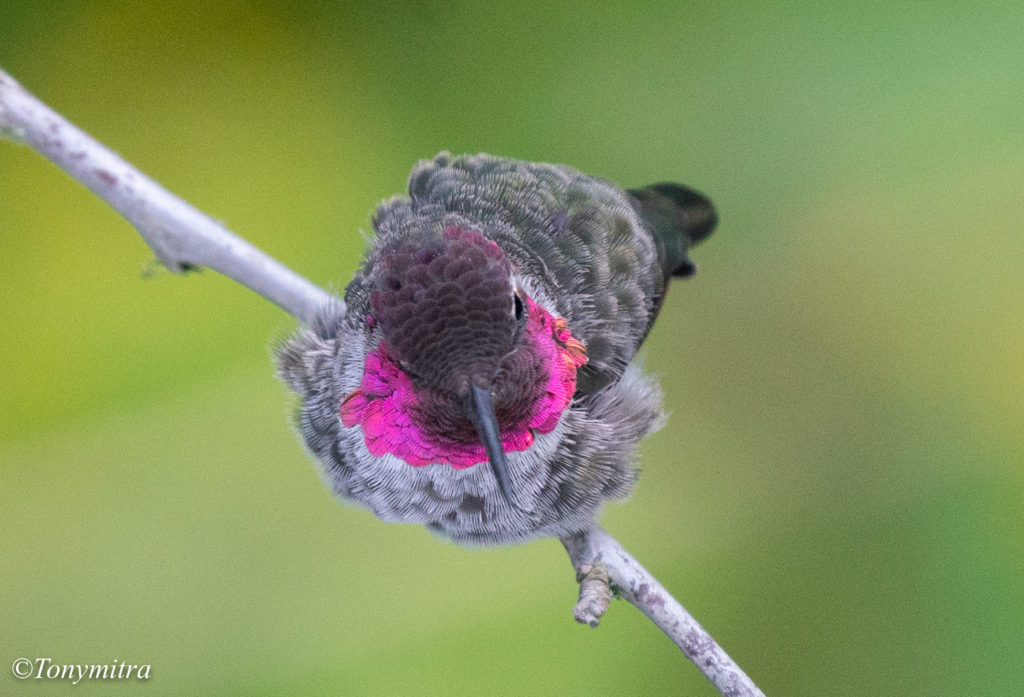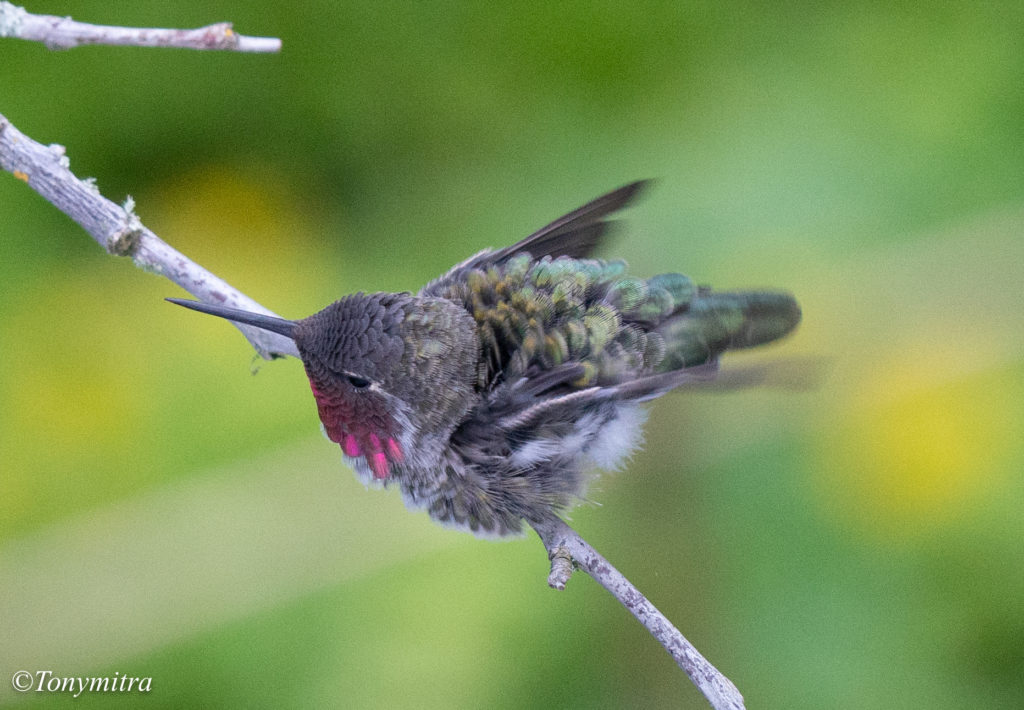
I distinctly remember when I first saw a hummingbird outside of a zoo. I was in Jamaica, visiting on a freighter ship where I worked as an engineer. I could barely distinguish it’s details since it was so small and fidgety, moving from flower to flower at the entrance to someone’s house. I had known about them, but was not expecting them, when a local resident pointed it out to me. It was gone in a few seconds, suddenly shooting off like a bullet. I so wished it had stuck around for a little longer. Those days, I only had an instamatic point and shoot camera, not suited to take pictures of birds that small under it was sitting on your hand. The the experience of seeing it for the first time, never left me.
I had of course seen a somewhat similar bird of my own birthplace – the old world sunbirds. They are perhaps not directly and closely related to the new world hummingbirds, but the old world sunbirds, flowerpeckers and spider hunters sort of evolved to similar shape and size in a process known as convergent evolution. Distantly related creatures, when adapting to identical lifestyle, often evolves to similar shape and size. This is how whales, dolphins and porpoises, which are mammals and were once four legged land dwellers, begin to look like fish, which internally some of them still hold the bones of vestigial hind legs, while for some others the legs have turned into flippers or paddles.
In my home state, West Bengal of India, the sunbirds were called Moutushi (মৌটুসি). Like hummingbirds, it makes tiny nests hardly four inches or so wide, and lays marble sized tiny eggs and raises a few chicks. But unlike the hummingbirds with their straight beak, the sunbirds usually have a downward curved beak. The sunbirds are, on average, just a tad larger than the hummingbirds, and although expert flyers and some have been noted to hover motionless in the air while drinking flower nectars, they usually will perch while doing so, whereas hummingbirds at the ultimate flyers in aerial acrobatics. They can not only hover motionless in the air, but can fly vertically up, or down. They can fly sideways left or right, and even backward – something that no other bird, or even man made helicopters can do as of today.
Hummingbirds are birds of the Americas, found from Alaska down to Tierra Del Fuego. But their greatest concentration and variety are to be found in the tropical belt in south America.
Here in British Columbia, Canada, I have seen only two kinds of hummingbirds. One is more prominent and found more often than the other. This is a migratory species – the Rufous Hummingbird. It lives south of the border in USA, but ventures up north into Canada in the summer, feeds on the local flowers, makes nests, lays eggs and raises young, before heading back south for the colder months.
The other, is the only resident hummingbird of the land – Anna’s hummingbird. They are similar is size and appearance and are greenish on their back with iridescent colouring and beautiful georgette on the throats of the males. People can and do mix one up with the other. But the best way to distinguish one from the other is that the Rufous usually has brick coloured feathers on its sides while the Anna’s has no rufous colour anywhere on it, and the male has some white around the eyes.

I see a rufous hummingbird perhaps five or six times as often as I see an Anna’s. They come to our backyard, not just for the flowers or the feeders, but also for the insects. Hummingbirds, as well as sunbirds and their relative the spider hunters – will take flying insects too.
This year, out backyard is being visited by both kinds of hummingbirds and often. And some of the males are still chasing partners. And thus, I could see a glorious male looking around for a female and advertising itself on a thin branch of my plum tree. On occasion, I even got the pair, male and female on the same branch.
Contrary to the normal angle of observation, where the photographer is on the ground and the bird is above him, here the roles were reversed. I was at my window on the top floor, say the 3rd floor above ground. The bird was on a branch a floor below me, and I was watching it almost vertically down.
Also, I was wearing a baseball cap with a bit of a red marking on it in front. On occasion, the female, which was constantly moving around searching out the flowers and the feeders, and drinking from them occasionally, came close to check if that red thing on my cap was a flower. It would come to almost a food from me, while I was leaning out of the window, and hover there, intently watching that mark on my cap, before deciding it was not a flower. It would be still and hover for a second or two before flying off. It was too close for me to focus on it and take a picture, since I had a long lens on me which would not focus on anything close.
But, on the other hand, I got some great shots including normal and slow speed videos of the birds.
In a way, my day was made.
